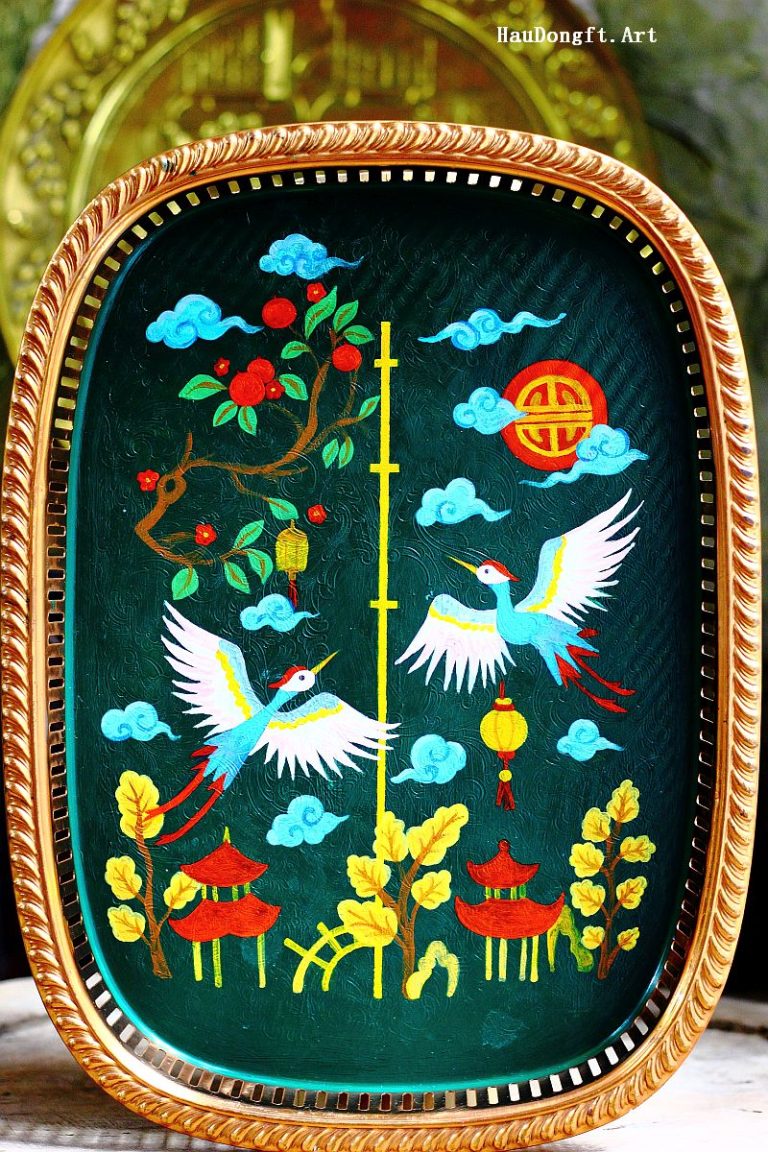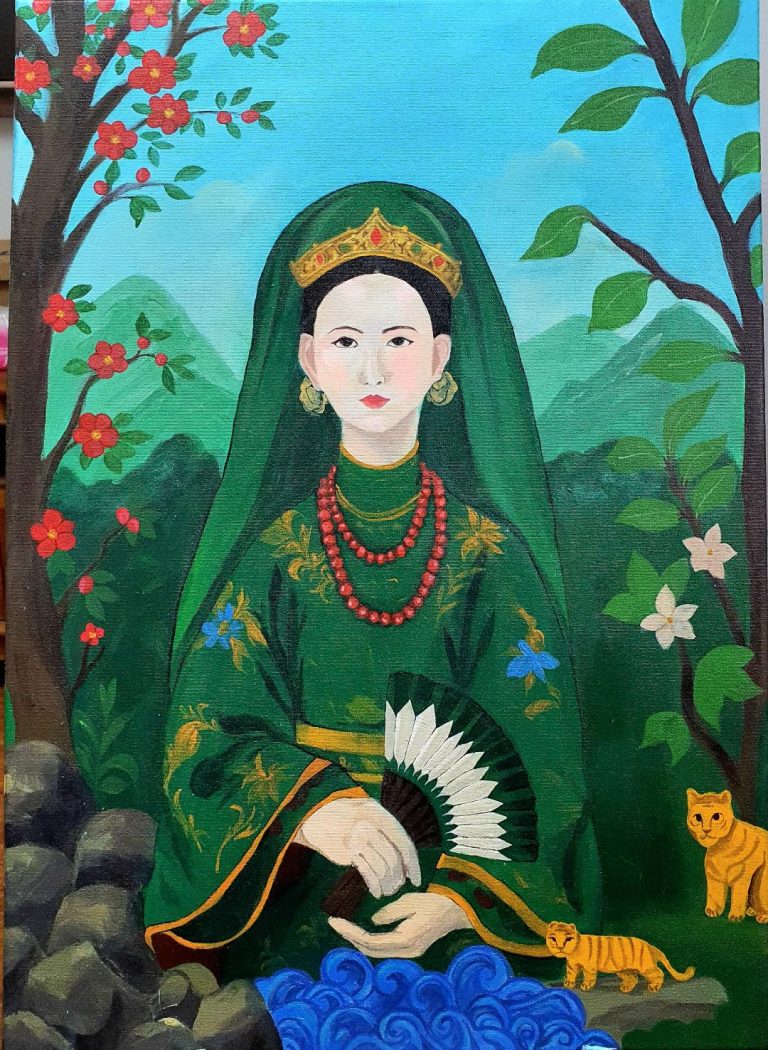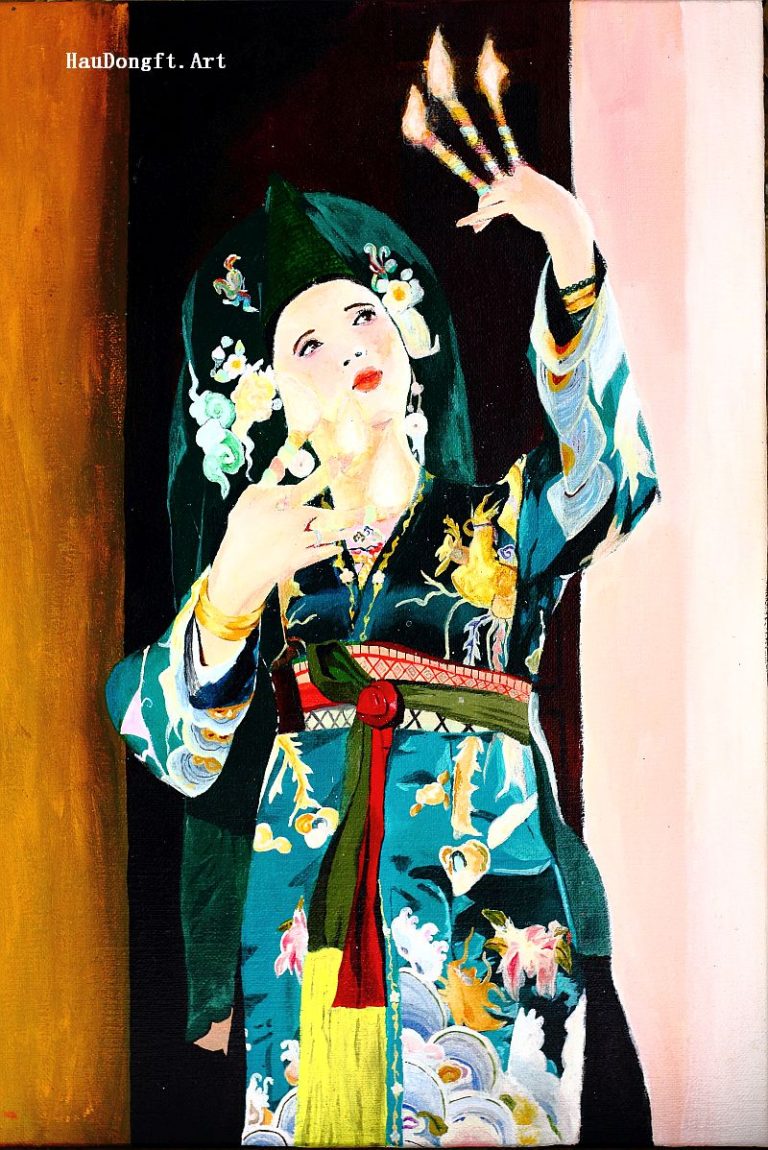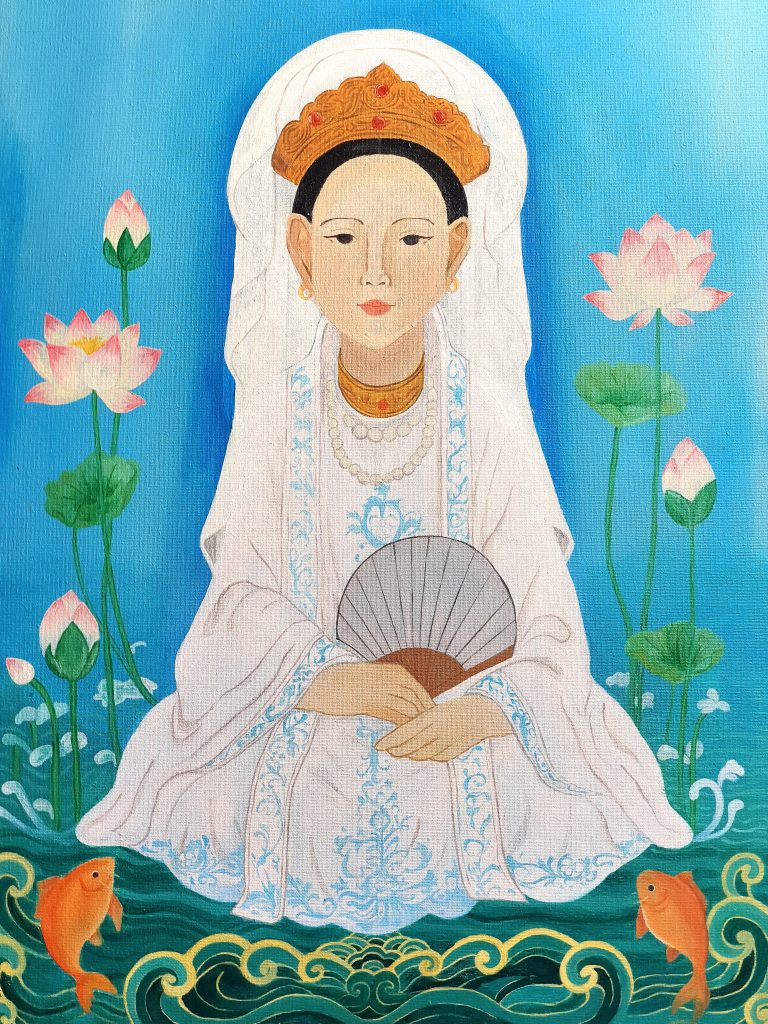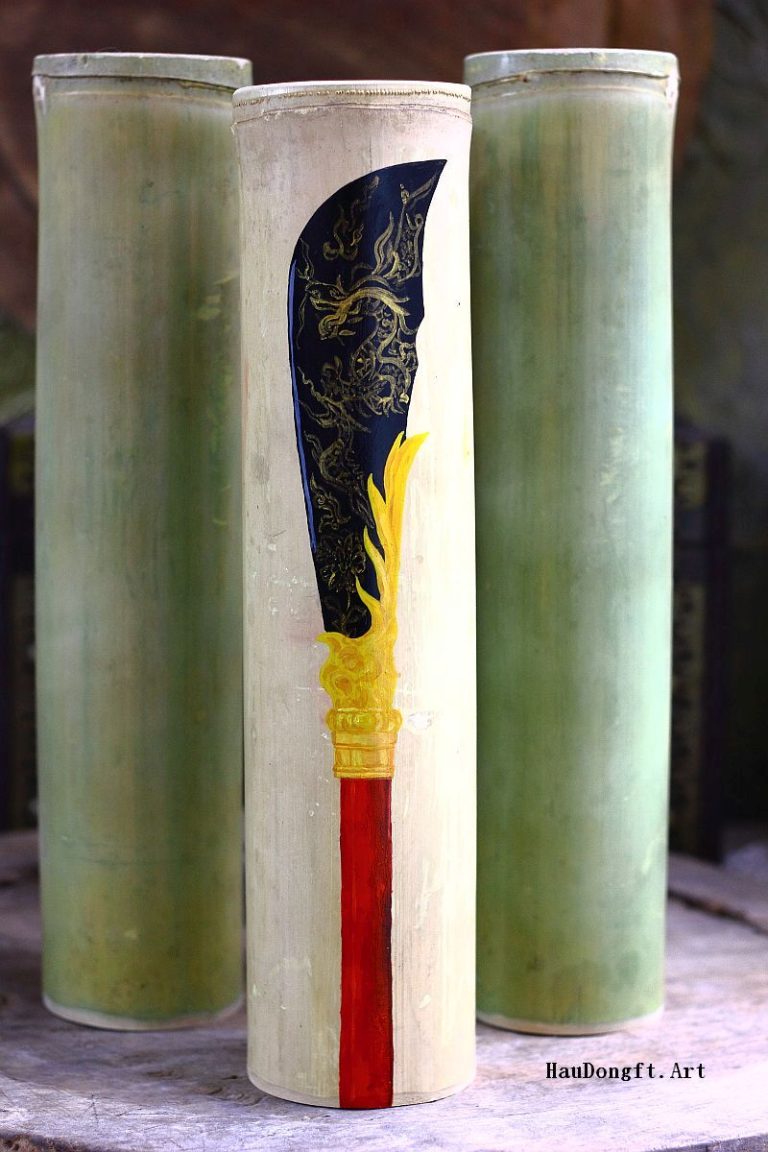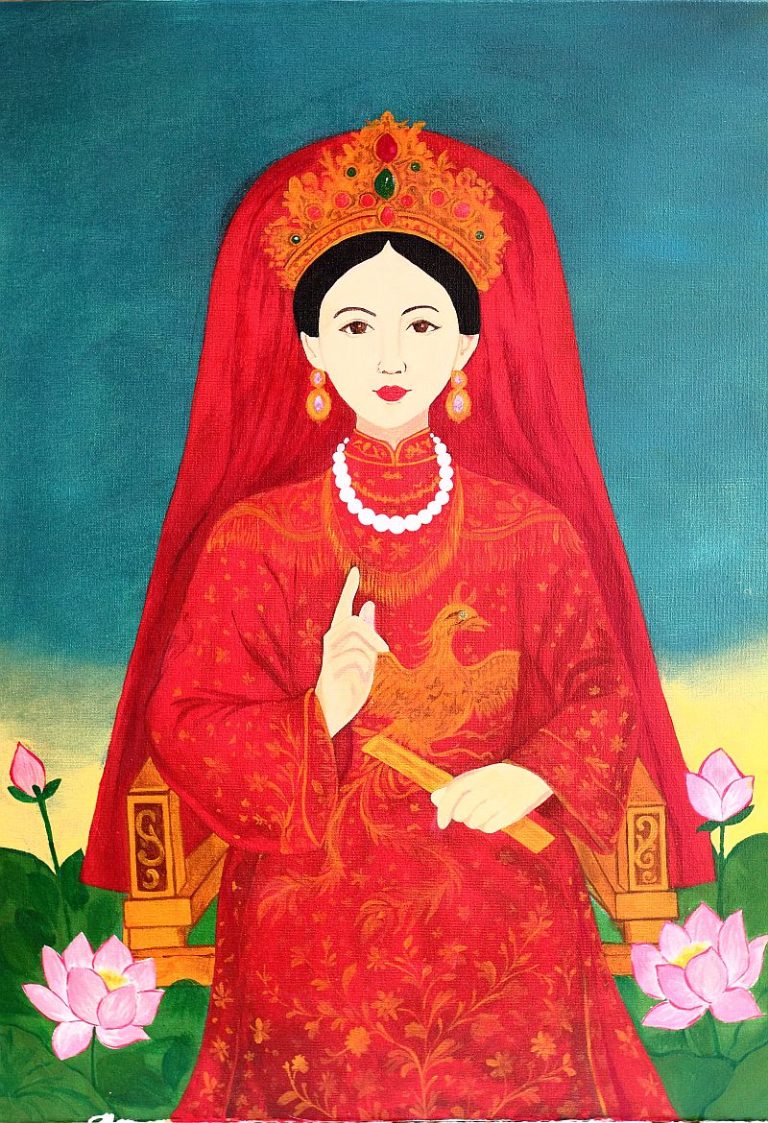Within the Mother Goddess belief system, rituals and festivals are abundant and diverse, carrying unique characteristics that distinguish them from other religions and spiritual practices. However, the most central and representative is the ritual of Lên đồng (spirit possession, also called Hầu bóng), along with the festival system, such as “Father’s commemoration in the eighth lunar month, Mother’s commemoration in the third lunar month.”
Lên đồng (Hầu bóng)
Lên đồng is the primary ritual of the Tứ Phủ (Four Palaces) Mother Goddess worship, as well as some other branches of Mother Goddess veneration. It is a possession ceremony in which deities of the Tam Phủ (Three Palaces) or Tứ Phủ descend into the bodies of male and female mediums (ông đồng, bà đồng), manifesting the images of these deities in order to give oracles, heal illnesses, and bestow blessings upon devotees.
The ritual bears distinct local variations, especially in Hanoi, Huế, and Saigon. Below, we present the main features of a Lên đồng ceremony in Hanoi, while also noting parallels with practices in Huế, Saigon, and the Central Highlands.
The term đồng is originally a Sino-Vietnamese word referring to boys under fifteen years old—innocent, pure, and naturally receptive—making them suitable vessels for divine possession. Later, young girls were also used, though occasionally even boys around ten years old still appear as mediums. Lên đồng literally means that deities “ride upon” the body of the child-medium.
Hầu bóng—literally “serving the shadow”—refers to a deity transmitting their shadow (soul) into the medium, with the medium merely serving that divine presence. Lên đồng is thus a repeated process of spirit possession. Each possession episode—when a deity descends (giáng đồng), performs their functions (ritual acts, dances, blessings, oracles), and then departs (thăng đồng)—is called a giá đồng (altar stage), meaning the “seat” upon which the deity resides through the medium.
In popular usage, the term đồng cốt often arises, with varied interpretations. According to Phan Kế Bính, there are two types of mediums: đồng cốt devoted to the Mother Goddess, and thanh đồng devoted to the Father King Bát Hải and Saint Trần. The word cốt (lit. “bones” or “body”) can mean the medium’s physical vessel into which the spirit descends, or, historically, “Bà cốt”—a Northern Vietnamese term for sorceress, possibly derived from the mishearing of Bà Cô Tí into “Bacoti.” It may also imply the youthful, pure “essence” (cốt cách) of a child-medium.
Lên đồng ceremonies are performed several times a year, depending on the temple and medium. Key annual rituals include the New Year’s offering, the First Lunar Month (Thượng Nguyên), the Fourth Month (Nhập hạ), the Seventh Month (Tán hạ), the year-end (Tất niên), and the Twenty-Fifth Day of the Twelfth Month (Hạp ấn). The most important occasions are the Mother Goddess commemoration in the Third Month and the Father King Bát Hải, Saint Trần commemoration in the Eighth Month.
Beyond these, individual temples and mediums host many more rituals—such as the initiation (trình đồng), natal spirit ceremonies, and feast days of various deities: Lady Bơ (12/6), Lord of the Third Palace (24/6), Prince of the Seventh Palace (17/7), Trần Triều (20/8), Father King (22/8), Lady Bác Lệ (9th Month), Prince of the Tenth Palace (10/10), Lord of the Second Palace (11/11).
Mediums carefully choose auspicious days for their rituals. Invitations are sent to disciples, fellow devotees, and assistants (hầu dâng) who help during the ceremony, along with musicians (cung văn). Preparation of offerings is costly and time-consuming, including food, liquor, betel, cigarettes, toys, jewelry, and ritual items—each selected according to the colors associated with the deity’s palace: red for Heaven, yellow for Earth, white for Water, green for Mountains.
Each possession episode requires its own costume. Mediums often own multiple elaborate outfits—sometimes worth gold—stored carefully for ceremonies. Wealthy mediums may maintain separate wardrobes: luxurious ones for grand festivals at their home temple, simpler ones for pilgrimages. Costumes must correspond to the specific deity; they cannot be mixed across ranks. For urban practitioners and overseas Vietnamese communities, the attire is particularly elaborate, often including richly embroidered robes, beaded headdresses, ivory tablets, swords, fans, and ritual flags.
Before spirit descent, rituals for wandering souls (lễ Chúng sinh) and offerings to the deities (lễ Trình) are performed, involving symbolic paper money, food, and tam sinh (three types of meat: chicken, duck, pork).
Musicians (cung văn) are indispensable, playing instruments such as the moon lute, drums, clappers, and cymbals, and singing hát chầu văn—songs narrating the lives and virtues of the deities. Their skill in timing and performance directly shapes the intensity of possession, and they are often rewarded by the mediums.
The ceremony follows a cycle: descent (Thánh giáng), costume change, incense offering (dâng hương), trance dance (múa đồng), oracle and blessing (ban lộc), and departure (Thánh thăng). Deities are invoked in hierarchical order: Mother Goddesses, Lords (Quan), Ladies (Chầu), Princes (Ông Hoàng), Maidens (Cô), and Youths (Cậu). Some deities are invoked consistently (the Three Mother Goddesses, major Lords), while others appear rarely.
The possession is enacted through veiling with a red cloth—symbolizing death of the human self, so the body becomes an empty vessel for the deity. Once possessed, mediums speak, gesture, or bless as the deity, while disciples respectfully address them as royalty.
Each deity has distinctive dances—martial with swords and spears for Lords, fan or torch dances for Ladies, elegant or playful dances for Princes and Maidens, and vigorous lion dances for Youths. The ecstatic atmosphere builds with incense, music, alcohol, and offerings, producing trance states. Devotees receive blessed items—betel, fruit, cigarettes, money—believed to carry the deity’s power, especially valuable for traders seeking prosperity.
The ceremony may last two to seven hours, ranging from solemnity during Mother Goddess and Lord possessions to lively festivity in the Prince and Maiden stages. It ends with thanksgiving, communal feasting on blessed food, and distribution of sacred leftovers.
In summary, Lên đồng is a multi-possession ritual where mediums embody various deities through cycles of descent and departure, signaled by the red veil and costume changes. It is both a religious performance and a cultural spectacle, blending devotion, art, and communal celebration—an ecstatic enactment of divine presence and power.
